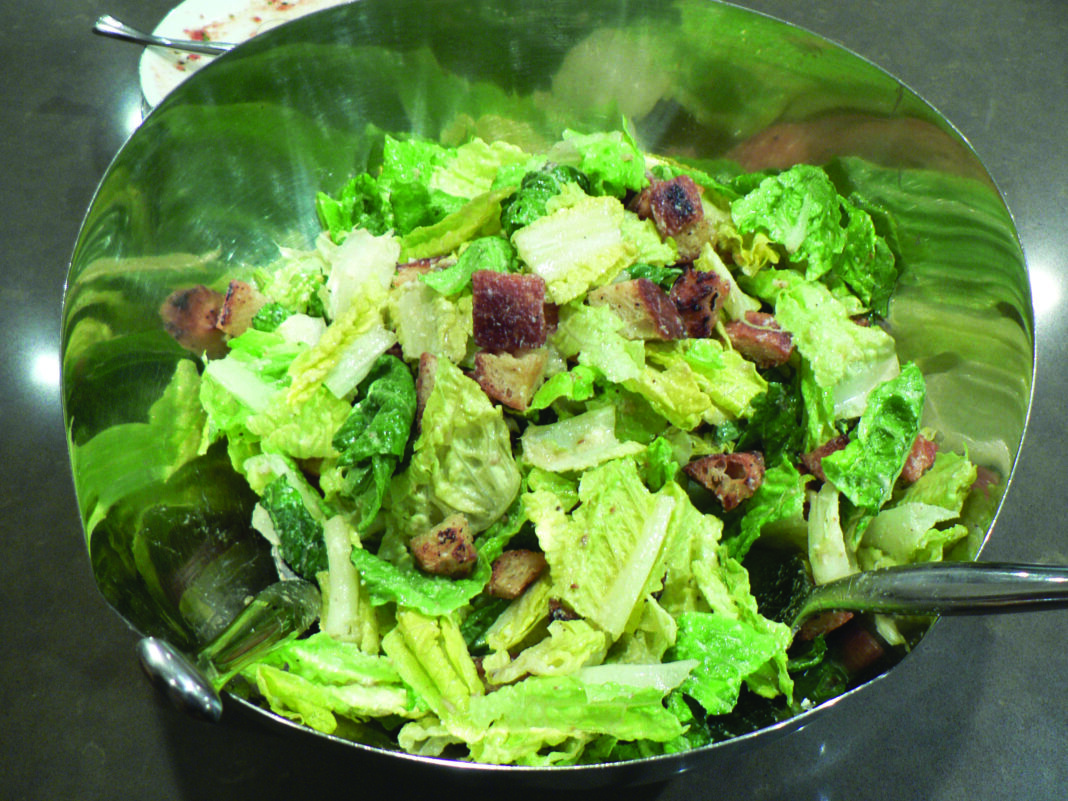A couple of Friday nights ago I was unmotivated to cook anything and with a bare larder at home in any case. I headed to town, to the Coast Café, for my occasional go-to takeout order on Bolinas nights like this: The Coast’s Caesar salad. It’s a crunchy meal in itself and at $11 for the full size, doesn’t need any accompaniment.
From my humble and hungry perspective, you can’t call it a Caesar salad unless the salad arrives with a fine array of salty anchovies. I know, I know—it’s controversial. In reading up on the history of the salad, I do know that anchovies were not a part of the original Caesar conjured up by its inventor, Caesar Cardini—but they’ve evolved as an essential part of the dish.
I recognize that like, say, black licorice, anchovies are one of those foods that one either really loves or really hates. They’re sort of the King Crimson of foods, as in there’s not much middle ground there.
I feel the same way about croutons as many people feel about anchovies, and here they are, together at last, in the Caesar. I don’t understand croutons—they get mushy in the dressing. Why bother. Okay, I do like the zesty croutons on the Coast’s salad, before they get mushy. But I also like black licorice, just not on my Caesar salad.
The other day I was out in front of the Bolinas Museum for an art opening and got to talking with a few people about the many joys, and occasional controversies, that attend a Caesar salad. Shari was the hardcore member of the group who loved to make a Caesar at home, but only if she was able to locally source the salad. It’s kind of ironic that locally sourced anchovies are hard to come by—unless there are massive schools of the fry swimming around in the Bolinas Lagoon. That’s quite a sight to behold, when the anchovies come in. Of course one can’t just net them and chuck them atop a pile of Romaine—the ’chovies ought to be cured, before they’ll cure what ails ya.
Shari swears by her house-made croutons as rendered from Parkside bread, baked fresh daily in Stinson Beach, and the featured bread at the Coast. She took a hard line on garlic: lots of it. The four of us stood around for a while trading our knowledge about Cardini, his restaurants in San Diego and Tijuana, how a trad Caesar is tossed tableside—and then everyone was hungry.
Before we went our separate ways, a consensus emerged that when ordering a Caesar salad, the default position should be that the anchovies are part of the dish, and if one doesn’t like anchovies, it’s up to you to say so.
But we’re not quite there yet as a society. One time I ordered the Caesar and got home only to find that sprouts had replaced anchovies as the centerpiece of the dish. Sprouts? Apparently if you don’t ask for the anchovies, I surmised, you get some sprouts instead. I chewed the sprouts like a sad cow. That will never happen again!
A fully-tricked out Caesar is, generally speaking, composed of Romaine lettuce, croutons, olive oil, anchovies, Parmesan cheese, black pepper, and/or Worcestershire sauce to replace the anchovies. Maybe there’s some raw egg, maybe not. Many places will offer a grilled chicken (or salmon) add-on, and who am I to object. Go for yours.
My palate is not nearly so refined as to be able to detect, necessarily, a splash of Worcestershire, but there’s no mistaking those luscious and pungent little fishes in the Coast Cafe take—in their dreadful absence, and in their blessed presence. If I were tweaking the salad, I’d throw a little more garlic into the mix—I’m with Shari on this point—but there’s no law that says you can’t shred a bulb at the homefront before digging in.
And anyway, the whole point of the Caesar salad, as originally configured, was as a sort of throw-it-all-in sort of deal designed to be a meal-in-one.
“Do you want anchovies on that?” the Coast Café bartender asked when I placed my order a few Fridays ago. She may as well have asked if I wanted whirled peace, a Gibson ES 335 in cherry red, and Merrick Garland on the Supreme Court instead of Flounder from Animal House.








